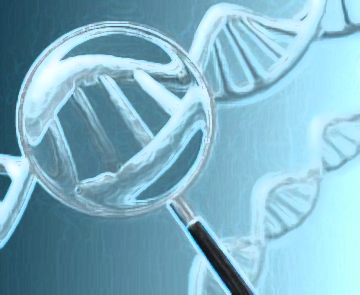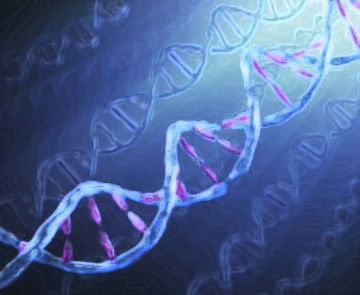Most often osteoarthritis is related to the natural process of wear of the cartilage, but when does the pain appear?
People who have osteoarthritis start complaining of pain around the age of 60 but OA started well before! The cartilage wears away slowly, over the years, it is a silent process at the beginning. In fact, when the pain themselves, it is already well advanced. The back or neck, can become painful earlier, around 50-55 years. But it also depends on people. Some families are more affected than others. People who have difficult jobs or who have suffered injuries and operations, this may be much more young again, 40 years!
When pain is on the joints, is it necessarily osteoarthritis?
Not of course! There are many other joint diseases that may be the source of pain. Osteoarthritis initially occurs rather when it is run, that is forced or joint that is sport. The pain is stronger at night and subsides at rest. On the contrary, a pain that manifests itself during the night and leaving very stiff joints, until later in the morning, suggests more to arthritis which is an acute joint inflammation. There, the joint is hot, red. If in doubt, further medical tests allow to distinguish and to identify other joint diseases such as rheumatoid arthritis.
What does do to preserve their joints?
Prevent osteoarthritis is indeed not possible in the strict sense of the term, but regularly play sports throughout his life to keep joints healthy. That they continue to work well, should they work regularly. Walking, swimming, but also water aerobics and stretching are excellent. This is not the case of cycling, too painful for the dos for example... because there absolutely save her joints! Avoid wearing heavy loads but also all the bad positions that promote particular back pain. Stand straight when you are sitting, sleeping on the side with a bent knee to relieve the lumbar vertebrae. When it is down, it is essential to well to bend the knees. And then, to watch his weight to bear excessive pressure to the joints of the knees and hips... but this is also true for stay healthy in general!
Are these tips also apply when you already have osteoarthritis?
Of course. Do not stop using his joints when they become painful, although on the contrary. The muscles should stay tonic: it is they who draw on the joints and cause movement. We must therefore keep a maximum of mobility and continue its activities normally.
It is recommended to wear shoes with thick soles to absorb shocks, and relieve the joints. The power supply also has its role to play. Intakes of vitamins, trace elements and antioxidants are very important to preserve the joints. Avoid bad positions, the backlash of joints, maintain muscles and joints and lose weight, it is vital.
What are drugs that relieve?
Initially, acetaminophen relieves pain and inflammation. Then, it is necessary sometimes to anti-inflammatories (steroidal) or even to corticosteroid infiltration, when the disease progresses. Since more recently also been injections of hyaluronic acid which is a protein of cartilage. These injections can increase the visco-elasticity of cartilage. The results look promising for osteoarthritis of the hip and knee. Analgesic consumption would be diminished after only a week. This seems more effective if osteoarthritis is not too advanced. But no study exists with regard to the effects on the natural evolution.
And physical therapy?
It is a very important help that should not be overlooked. It should not hesitate to seek assistance when you get too bothered in everyday life. Rehabilitation to regain mobility, maintain the joints and muscles. Brief to truly work joints... what tends to avoid when one suffers, of course. However, it is essential. And then, this also often helps people to relax and to better manage pain.
What do you think of glucosamine?
I recommend to use it, Yes, because studies show that we obtain with this treatment of very good results. It is a product over-the-counter without a prescription in pharmacies under the brand name Cartilamine ®. Attack treatment, need to take 500mg 4 times per day for 2-3 months and then in maintenance treatment, reducing the dose to 2x500mg/day. Here too, the main interest is to repair cartilage.
You can also wear orthotics and orthotic insoles if the pain is located on the heel joints to ease the pain.
People who have osteoarthritis start complaining of pain around the age of 60 but OA started well before! The cartilage wears away slowly, over the years, it is a silent process at the beginning. In fact, when the pain themselves, it is already well advanced. The back or neck, can become painful earlier, around 50-55 years. But it also depends on people. Some families are more affected than others. People who have difficult jobs or who have suffered injuries and operations, this may be much more young again, 40 years!
When pain is on the joints, is it necessarily osteoarthritis?
Not of course! There are many other joint diseases that may be the source of pain. Osteoarthritis initially occurs rather when it is run, that is forced or joint that is sport. The pain is stronger at night and subsides at rest. On the contrary, a pain that manifests itself during the night and leaving very stiff joints, until later in the morning, suggests more to arthritis which is an acute joint inflammation. There, the joint is hot, red. If in doubt, further medical tests allow to distinguish and to identify other joint diseases such as rheumatoid arthritis.
What does do to preserve their joints?
Prevent osteoarthritis is indeed not possible in the strict sense of the term, but regularly play sports throughout his life to keep joints healthy. That they continue to work well, should they work regularly. Walking, swimming, but also water aerobics and stretching are excellent. This is not the case of cycling, too painful for the dos for example... because there absolutely save her joints! Avoid wearing heavy loads but also all the bad positions that promote particular back pain. Stand straight when you are sitting, sleeping on the side with a bent knee to relieve the lumbar vertebrae. When it is down, it is essential to well to bend the knees. And then, to watch his weight to bear excessive pressure to the joints of the knees and hips... but this is also true for stay healthy in general!
Are these tips also apply when you already have osteoarthritis?
Of course. Do not stop using his joints when they become painful, although on the contrary. The muscles should stay tonic: it is they who draw on the joints and cause movement. We must therefore keep a maximum of mobility and continue its activities normally.
It is recommended to wear shoes with thick soles to absorb shocks, and relieve the joints. The power supply also has its role to play. Intakes of vitamins, trace elements and antioxidants are very important to preserve the joints. Avoid bad positions, the backlash of joints, maintain muscles and joints and lose weight, it is vital.
What are drugs that relieve?
Initially, acetaminophen relieves pain and inflammation. Then, it is necessary sometimes to anti-inflammatories (steroidal) or even to corticosteroid infiltration, when the disease progresses. Since more recently also been injections of hyaluronic acid which is a protein of cartilage. These injections can increase the visco-elasticity of cartilage. The results look promising for osteoarthritis of the hip and knee. Analgesic consumption would be diminished after only a week. This seems more effective if osteoarthritis is not too advanced. But no study exists with regard to the effects on the natural evolution.
And physical therapy?
It is a very important help that should not be overlooked. It should not hesitate to seek assistance when you get too bothered in everyday life. Rehabilitation to regain mobility, maintain the joints and muscles. Brief to truly work joints... what tends to avoid when one suffers, of course. However, it is essential. And then, this also often helps people to relax and to better manage pain.
What do you think of glucosamine?
I recommend to use it, Yes, because studies show that we obtain with this treatment of very good results. It is a product over-the-counter without a prescription in pharmacies under the brand name Cartilamine ®. Attack treatment, need to take 500mg 4 times per day for 2-3 months and then in maintenance treatment, reducing the dose to 2x500mg/day. Here too, the main interest is to repair cartilage.
You can also wear orthotics and orthotic insoles if the pain is located on the heel joints to ease the pain.


 RSS Feed
RSS Feed